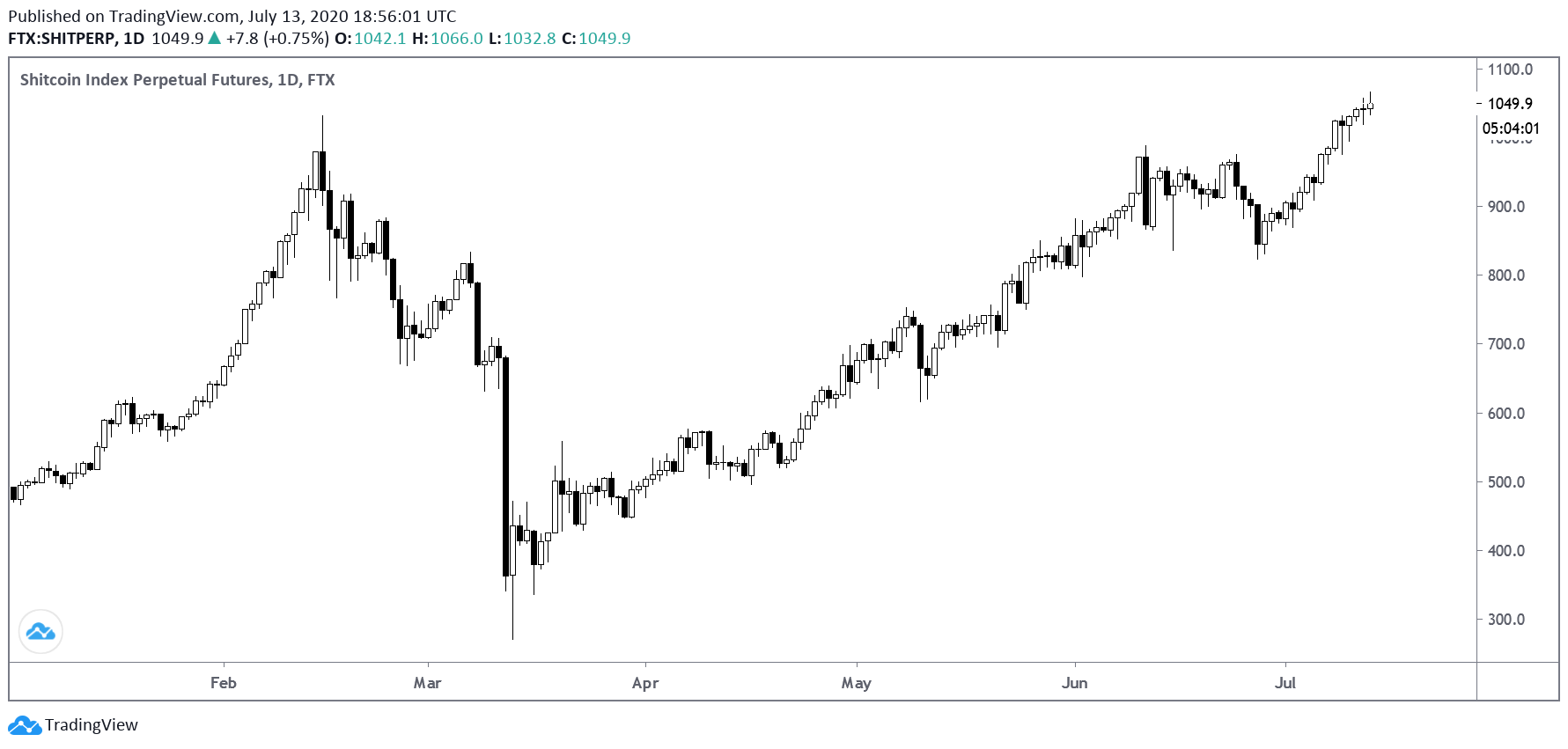Once a Pioneer, Cosmos Blockchain Project Faces ‘Existential’ Crisis
The early days of the blockchain industry were defined by maximalists. A winner-takes-all mindset pervaded crypto Twitter and blockchain forums, with fans of each new project – be it Ethereum, Bitcoin, or Cardano – hell-bent on convincing others that its chain would be the chain to snuff competitors and take blockchains mainstream.
In recent years, this absolutist mindset has fallen mostly out of vogue, with new blockchains launching every day alongside “bridge” infrastructure to help them communicate with one another.
At the forefront of this shift was Cosmos – the blockchain ecosystem that helped to pioneer the “appchain,” shared security, and the proof-of-stake consensus mechanism that now powers Ethereum and most newer blockchains.
Cosmos set out to create not one blockchain, but a family of them – each engineered for its own use case but set up to easily communicate and swap assets back and forth. Once considered a technical marvel in the world of blockchain infrastructure, the Cosmos SDK – the software development kit that allows anyone to build a Cosmos-based blockchain – was at one point the go-to toolbox for any developer looking to spin up a network.
But among the blockchain ecosystems that have been hit hardest by crypto’s market meltdown, Cosmos sits near the top of the list.
The spectacular collapse of Terra – at one point one of the largest Cosmos-based blockchains – left a liquidity hole in Cosmos’s decentralized finance (DeFi) ecosystem that it has yet to recover from. Politics and infighting – both a feature and a bug of Cosmos’s open-source development model – have been blamed for slowing down development. Now, newer blockchain-in-a-box projects have proliferated, particularly in the Ethereum ecosystem, which put Cosmos at risk of becoming obsolete in a category it once monopolized.
It also can’t help that the U.S. Securities and Exchange Commission thinks that ATOM, the crypto token most closely associated with the Cosmos ecosystem, is a security.
According to Zaki Manian, a leading figurehead in the Cosmos community and the creator of Sommelier, the next year for Cosmos may well be “existential.”
“Cosmos has, I would say, like eight to nine months, maybe a year at most, to kind of find a way to create something unique and distinctive, something that differentiates itself and makes it feel like some coherent thing that’s separate from Ethereum or separate from the rest of the blockchain space,“ Manian told CoinDesk this week.
“I think we have the raw ingredients to have a shot.”
Every blockchain has limitations. Bitcoin, the first-ever blockchain, can’t do much beyond moving bitcoins from one address to another. It’s a limitation that maximalists say is intentional – making the no-frills bitcoin asset a better candidate to become “digital gold.” However, for traders now accustomed to the flashy NFTs and DeFi apps of other chains, basic bitcoin can leave them wanting more.
Ethereum introduced the world to smart contracts – the blockchain-based computer programs that anyone can create to power those new lending apps and NFT exchanges. However, the network’s high fees (upwards of $14 for a simple token swap) and relative sluggishness (around 27 transactions per second, versus over 1,600 per second on the Visa card system) have left room for newer blockchains to serve particularly demanding use cases, such as gaming.
As the tradeoffs of different blockchain designs have grown more obvious, the blockchain industry – and the Ethereum ecosystem in particular – has gradually coalesced behind the idea of a “multichain” universe, where different blockchains peacefully co-exist to serve different use cases.
The multichain ecosystem of old was plagued with security issues, however. Of particular concern were the cross-chain bridges used to move assets between disparate networks. Bugs in those bridges – or in the blockchains they carried assets to and from – led to high-profile exploits like the Ronin bridge hack, which siphoned over $600 million to alleged North Korean hackers.
Among the first projects to push a solution to the multichain security quandary was Cosmos. Built by a firm called Tendermint (now called Ignite), and now maintained by a wider consortium of developers and companies, Cosmos “appchains” were designed to interoperate from day one – a technical distinction that drastically reduced the surface area for potential bridge hacks. Among Cosmos’s key differentiators were the Inter-Blockchain Communication Protocol (IBC), which allowed assets to easily flow between chains, and Interchain Security (ICS), which allowed newer blockchains to borrow the security apparatus of existing networks.
Even as IBC and ICS were still in development, Cosmos was one of the biggest beneficiaries of 2019’s DeFi boom and the subsequent crypto craze. As startups raced to build new blockchains during the frothy, low-interest rate funding environment of 2019-2021, they frequently turned to Cosmos’s open-source developer toolkit, or SDK, which was then among the few ways to quickly build a new blockchain network.
“In 2019 there were two toolkits: there was Substrate and then there was the Cosmos SDK,” recalled Manian. “As a practical matter, everyone used the Cosmos SDK.”
Cosmos supplied the building blocks behind Binance’s popular BNB blockchain, the once-massive Terra blockchain, and the Cosmos Hub, the original Cosmos chain, whose ATOM token consistently hovers towards the top of crypto market charts.
As a bonus for using Cosmos, teams could boast environmental sustainability. The two largest blockchains – Bitcoin and Ethereum – used a power-hungry “proof-of-work” model to power their networks. Cosmos chains use “proof-of-stake” – a system that forgoes the energy-intensive practice of crypto mining and has since been embraced by a growing number of different blockchains, including Ethereum.
Whatever its early advantages, Cosmos has begun losing its grip on developers in recent months.
In the earliest days of 2022’s crypto market crash – while Sam Bankman-Fried and his FTX crypto exchange could still convincingly claim solvency – the Cosmos ecosystem was already beset by catastrophe. In May of 2022, Do Kwon’s “decentralized” digital dollar, Terra USD (TUSD), fell in price from $1 to below a penny in the span of a few days.
Terra tried (and failed) to use algorithms – rather than collateral – to keep TUSD at the price of $1. The project was built using Cosmos and was therefore compatible with other Cosmos-based chains. As the market caps of TUSD and its sister token, LUNA, initially climbed above $40 billion, much of that money flowed into a budding suite of Cosmos-based DeFi apps.
When TUSD and LUNA crashed, so did Cosmos’s DeFi ecosystem.
Osmosis, Cosmos’s main decentralized exchange (DEX) chain, boasted nearly $1.7 billion worth of liquidity at its February 2022 peak – a sum representing the total value of deposits into the platform for swapping Cosmos-based tokens. By June 2022, a month after Terra’s collapse, Osmosis liquidity had dropped to $150 million. Another year later, it sits even lower, at $116 million. (By comparison, Uniswap, the largest decentralized exchange on Ethereum and several other blockchains, dropped from around $7 billion to $3.8 billion since Terra collapsed – a 46% drop versus 93% on Cosmos.)
Less liquidity on Cosmos means less incentive for developers to deploy apps into the ecosystem.
“In many ways, it’s faded from people’s minds, what Terra meant to the Cosmos ecosystem,” Manian told CoinDesk in February – nearly a year after Terra collapsed. “I think the hit has been massive.”
Terra doesn’t bear complete blame for deterring developers. Cosmos SDK’s key features – its sustainability, shared security and interoperability – are also no longer as rare as they once were.
Cosmos helped to trailblaze proof-of-stake consensus and continues to claim its low carbon footprint as a key advantage on its website. But proof-of-stake is no longer a differentiator. In addition to serving as the foundation for most newer blockchains, Ethereum – the most-trafficked chain other than Bitcoin – shifted to a proof-of-stake mechanism in 2022 with its highly-publicized “Merge.”
Shared security was also supposed to be key value-add for Cosmos, enabling upstart blockchains to borrow the security apparatus of other networks. Cosmos introduced the functionality this year with a feature called Interchain Security (ICS), but a buzzy new project on Ethereum, called EigenLayer, has launched with similar capabilities.
Cosmos’s dominance in the chain-building space has also faded with the entrance of new competitors.
Ethereum’s community has looked to expand the ecosystem via third-party scaling networks, called rollups, that allow users to transact more quickly and cheaply than on the main chain, but without losing the base network’s essential security guarantees.
Recently, virtually every big rollup project has opted to release its technology out into the open for other teams to pick up and use. The “blockchain-in-a-box” pitches from Optimism, Arbitrum, Polygon and other rollup providers look similar to that of the Cosmos SDK – as do key features like customizability, shared security, low fees and interoperability.
A clear new frontrunner in the blockchain toolkit race is Optimism, whose OP Stack toolkit was used to power – among other new networks – Base, the new blockchain from Coinbase, and Mantle, a new chain linked to the Bybit exchange.
“We were pretty much batting 100 for exchange chains, where every exchange, when they started to ship a blockchain, was using Cosmos SDK,” lamented Manian. “Now, two of the biggest exchanges have picked different technology stacks.”
Even Binance’s BNB chain, which was built using the Cosmos SDK, has begun testing a version of its network that runs using the OP Stack.
Appchain vs. interoperability
Cosmos still has plenty going for it in terms of its technical bona fides.
dYdX, one of the largest decentralized cryptocurrency exchanges, decided last year to move to a new Cosmos chain after finding Ethereum too expensive and sluggish for its use case.
Other projects in the Cosmos community hope that dYdX’s upcoming Cosmos app, which is currently in testing, will replenish some of the users and liquidity that Cosmos lost with Terra’s collapse. The migration has already been helpful: Circle, the company behind USDC, the second-largest U.S. dollar-pegged stablecoin, announced plans to mint its coin directly onto Cosmos – a move timed to align with the new app from dYdX, one of USDC’s biggest users.
Cosmos’s boosters also claim their toolkit – though it now lags behind some newer tools in terms of its overall ease of use – still provides more flexibility to builders.
“There’s ‘interoperability’ and there’s ‘appchain,’” explained Manian. According to the Sommelier founder, Ethereum’s layer 2 toolkits only allow for “interoperability” – enabling people to code up new chains that can easily talk to one another and send assets back and forth. These aren’t “appchains,” according to Manian, because they still rely on Ethereum for their security and other core functionality.
Manian says that Cosmos, by contrast, allows developers to “vertically integrate as much as possible,” meaning they can control every facet of how their blockchains are designed – from how quickly they settle transactions, to the rules they use to power their security.
When it comes to Ethereum’s rollup toolkits, Manian argues that “their actual ability to build an appchain is actually at a pretty early stage. They could never have built what dYdX has built.”
Beyond the technical, Cosmos still has other headwinds.
For one thing, the SEC lumped ATOM in with a list of crypto “securities” in its recent lawsuits against Binance and Coinbase. A securities designation is rarely good news for a crypto project, but Cosmos wasn’t the only project targeted this time around – Polygon (MATIC), Solana (SOL), and several others were also listed. Moreover, while ATOM is deeply ingrained into Cosmos’s leading DeFi apps, its core infrastructure doesn’t rely on ATOM to function.
Cosmos co-founder Ethan Buchman was unwilling to comment on the SEC suits to CoinDesk.
Perhaps a larger problem than technical obsolescence or securities laws is Cosmos’s own community. Even in the raucous world of crypto, Cosmos’s open-source developer community is among the wildest. Its history is replete with mass resignations, lawsuits, and allegations of decentralized voter fraud.
Jae Kwon, one of the ecosystem’s founders, remains one of the more controversial figures in the blockchain world. His return last year to Ignite – the development firm he co-founded to build Cosmos, but left following a leadership dispute in 2020 – was accompanied by layoffs and strategic shifts that have largely backseated Cosmos infrastructure development to other priorities.
As a result, the ecosystem has less of a clear organizing structure than similar projects – with a hodge-podge of non-profits, development firms, and lone-wolf engineers all playing some role in pushing the technology forward.
There are, of course, some disadvantages to Cosmos’s messy politics. Community governance disputes frequently lead to technical setbacks – like when a long-planned, strategically important “revamp” for the Cosmos Hub blockchain was sidelined by a contentious community vote.
“I have often felt that the like organizational drama we’ve experienced in Cosmos is just the universe’s way of giving everyone else a chance to catch up because we were so far ahead,” said Buchman, in a panel discussion on Tuesday.
The politics have also led to some reputational baggage. As dYdX prepared for its shift to Cosmos, its CEO, Antonio Juliano, tweeted “I specifically don’t want dYdX’s brand to be too associated with cosmos.” The rationale behind this statement, according to Juliano, didn’t have anything to do with Cosmos drama. According to the dYdX founder in that same Twitter thread, “[a]pps should transcend any particular technology they are built on,” and “[t]his is not to say we aren’t huge fans of cosmos.”
However, some on Cosmos Twitter interpreted Juliano’s remarks as a veiled critique of the community’s antics – a sign that they would need to tame themselves or risk repelling future builders.
On the other hand, it’s from this chaos that comes some of Cosmos’s beauty. If the Cosmos experiment does succeed, its proponents say it will hold a truer claim to the mantle of “decentralization” than competing projects led by centralized companies or pseudo-decentralized foundations. While Cosmos has its own grant programs and informal hierarchy, its core infrastructure and many of its most popular projects are maintained bottom-up by a passionate base of builders.
“There’s this philosophy and set of values that shines through that is really, you know, tuned to the hacker culture of openness and experimentation,” Buchman told CoinDesk. “Those values are going to be true in the long term, and despite all these short-term market setbacks, that’s the kind of thing that’s gonna win in the end.”
As for what success actually looks like, many of Cosmos’s core contributions to the blockchain space – early models for interoperability, proof-of-stake, and shared security – have already crept their way toward ubiquity, meaning they’ve been validated by the wider industry.
Despite his existential prognostications, Manian said he is confident that Cosmos will continue on in some form. He just hopes its vibrant builder ecosystem doesn’t fade into the background.
“I think the big question,” he said, “is whether or not Cosmos continues to exist as an identifiable, distinct thing, or it just gets swallowed up into: ‘Oh, it’s just one toolkit that you can use to build an appchain’”









